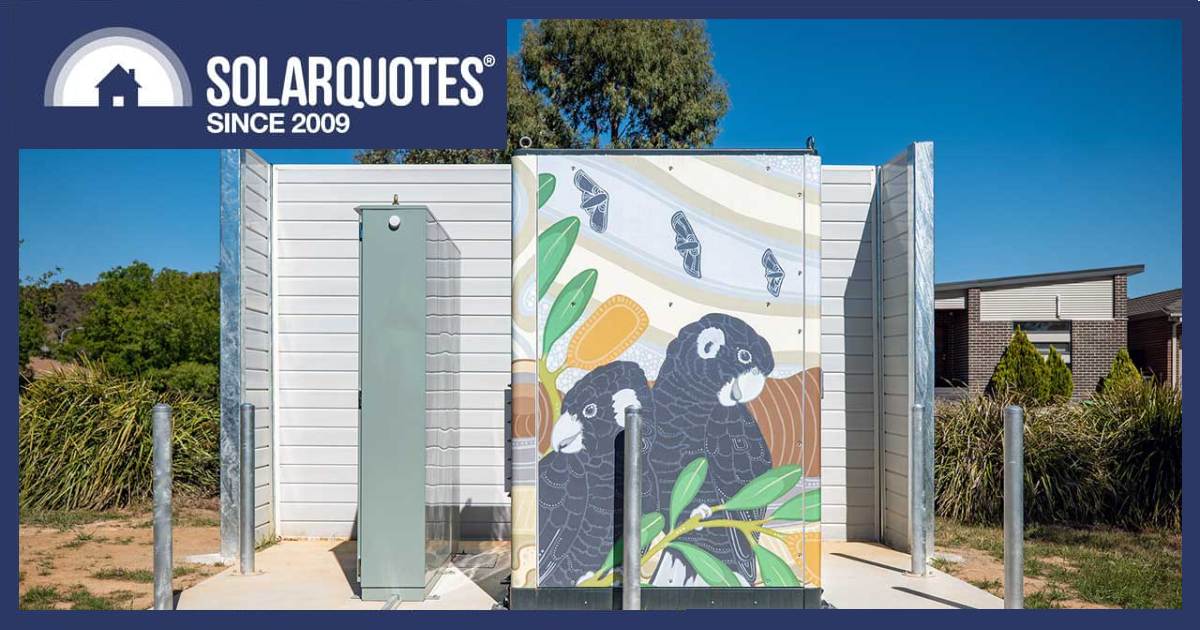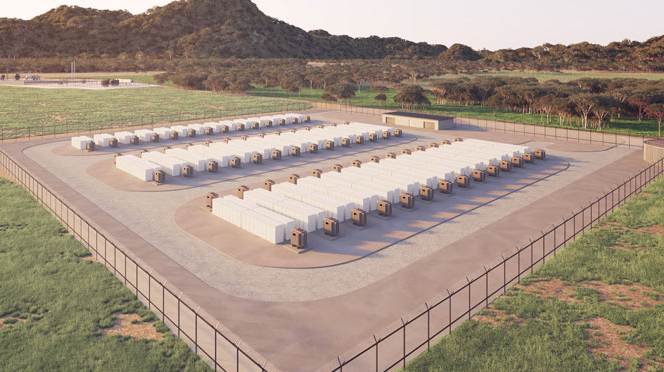
The launch of a neighbourhood battery in the Canberra suburb of Casey sees another milestone achieved in the Big Canberra Battery Project rollout. And we take a quick look at how home battery uptake has been tracking in the ACT.
How Big Is The Casey Neighbourhood Battery?
In terms of capacities, the Casey Neighbourhood Battery has an energy storage capacity of 225 kilowatt-hours (kWh) and a maximum power output of 110 kilowatts (kW).
“Unlike home batteries, neighbourhood batteries connect directly to the local electricity network, storing surplus energy from the grid during the day and releasing it when demand is high,” said ACT Minister for Climate Change, Environment, Energy and Water Suzanne Orr. “Think of it as an energy sponge for the suburbs, these neighbourhood batteries soak up excess energy during the day and release it when it’s needed most.”
Minister Orr said such systems help reduce pressure on the mains grid, support more rooftop solar installation, boost power quality and reliability, and play a role in developing a cleaner, more robust electricity system.
However, should a mains electricity outage occur, the battery will automatically shut down to protect Evoenergy crews working to restore power.
The Casey project features artwork by Kalara Gilbert, a Wiradjuri artist based in Canberra.
About The Big Canberra Battery Project
The Casey battery joins other neighbourhood projects in Dickson and Fadden being delivered in partnership with Evoenergy. The Fadden and Dickson energy storage systems have been installed and are expected to be operational by the end of November 2025.
This pilot project received funding from the Federal Government’s Community Batteries for Household Solar Program, with additional funding provided by Evoenergy.
“The installation of these three neighbourhood-scale batteries will help us learn more about how this type of battery works and how it can help the electricity network to make the best use of renewable energy and avoid costly network upgrades,” says the project page.
The ACT Government is looking into other suitable areas to install neighbourhood-scale projects across the region, where the systems can help avoid the need for expensive, large-scale network upgrades.
But neighbourhood energy storage is only part of the overall Big Canberra Battery Project, which also includes:
- A large-scale battery energy storage system in Williamsdale that is currently under construction. It has a power capacity of 250 megawatts (MW) and a storage capacity of 500 megawatt-hours (MWh)
- Behind-the-meter systems at nine government sites that were installed in early 2024, with an additional 2 added in 2025.
The ACT Government says the Williamsdale project will be capable of powering one-third of Canberra for two hours during peak demand. On a single charge, the 500 MWh of capacity could supply 23,400 households with their daily electricity use.

The ACT has achieved 100 per cent renewable electricity since 2020 and battery storage technology plays a critical role the Territory’s net-zero emissions future. The ACT is committed to achieving net zero emissions by 2045 (based on 1990 levels) and was shooting for emissions reductions of 50 to 60% by this year.
Home Battery Uptake In The ACT
Helping the ACT achieve its emissions goals are the efforts of local households and businesses that have been installing solar panels and more recently, home batteries.
The Casey project doesn’t appear all that impressive when you consider what some Australians are installing in their own homes these days thanks to the federal Cheaper Home Batteries program (CHBP). Average capacities have been quickly increasing, spurred on by special deals on big systems.
In the ACT, 1,088 home batteries had been installed and commissioned between July 1 (CHBP formal launch date) and September 30 this year. According to Clean Energy Regulator data, the collective useable capacity of those systems is 20,556 kilowatt-hours; which works out to an average of 18.89 kWh. That’s nearly 40% more useable capacity than a single Tesla Powerwall.
There are some great deals out there, and some that only appear to be — so use the CHBP discount wisely as it’s a purchase decision you (should) be living with for a long time; and preferably without headaches or disappointment. Whether you live in Canberra or elsewhere across Australia, learn everything you need to know about home batteries here.











